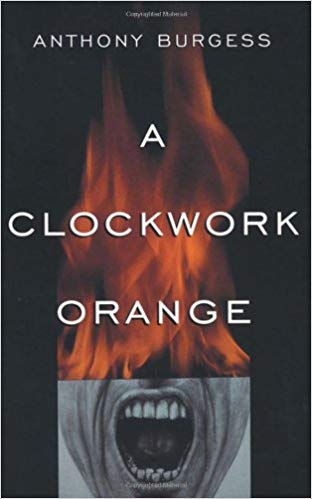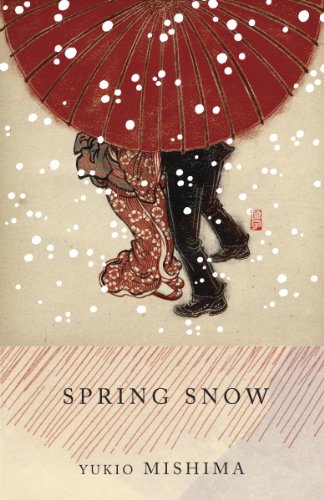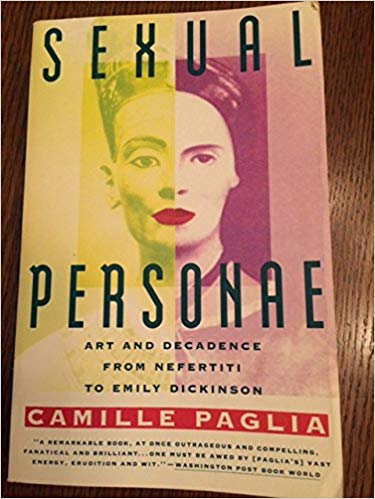What Happens When We Read Like David Bowie
Our minds are the sum of what we absorb from our environment, who we surround ourselves with, and how we choose to spend our days. We aren't what we eat; we are what we read, see, hear, smell, do, and eat. Each human mind is the totality of one flesh bag's experience in this crazy universe, colliding and collaborating with everything we encounter as we hurl through space.
It follows, then, that we cannot become more like someone else because duplicating an entire life is impossible. Although reading lists abound promising brains like Bill Gates and investing prowess like Warren Buffet, we are only adding a small piece of someone's experience to our own. We cannot isolate one aspect of a being, absorb it, and become like it. This may be a great science fiction trope and an effective marketing ploy, but it is not reality.
Using themes as lightning rods, however, serve to ground otherwise erratic-seeming research choices. Themes allow us to study deeply in a short period of time--something that might take years when jumping from topic to topic. David Bowie's artistry and creative influences is one such topic that has occupied my brain for several years. Two years ago, I critically listened to every Bowie album. I spent time in London and Berlin last year (two Bowie haunts where he created some of his best music) and frequented museums and galleries showcasing his favorite artists. I watched The Man Who Fell to Earth and read his lyrics. Bowie became my genius-cum-lightning-arrestor, especially at times when my imagination and creative output seemed in peril. Reading, though, didn't much enter into it.
Perhaps the strange ones in the dome can lend us a book, we can read up alone. -David Bowie, Drive-in Saturday
A good friend sent me a link to this article that purports to be a list of books that influenced the late David Bowie, a man who carried a traveling library with him when he went on tour. I was surprised to learn that Bowie was not just an avid reader but was the reader we aspire to be: deeply read within his favorite genres; literary but not to the point of eschewing current cultural movements as simple "pop"; ever-changing in authors, genres, topics; and, perhaps most importantly, astute in his ability to formulate clever allusions to his favorites within his own works. After learning more about his reading habits, I couldn't resist the urge to add this component to my Bowie research.
An interesting thought experiment emerged: what would happen to my brain if I read like David Bowie for set period of time? Would I find myself more creative, able to compose poetry like "Life on Mars" or "Oh You Pretty Things"? Or would this experiment fall into the realm of miracle workouts and killer investment strategies? Would I need to combine reading with writing music with Iggy Pop, taking lots of drugs, and living in a hip city to be effective? Or is the simple act of reading outside my typical lists enough to fire synapses in a new way?
I mulled this over for a spell and came to an obvious conclusion: no peer-reviewed journal will criticize my methodology (fortunately) and reading his influences would only serve to aid my understanding of his art. So began my experiment to read like David Bowie.
This required some research. Bowie left us his "Top 100 Recommended Books" and was effusive in his praise of his favorite authors in interviews. With so many options, I eventually chose to dovetail my Bowie reading list with three other interests: the artistic mind, Japanese literature, and modern Western literature.
Without further ado, here is a partial list of what I read to read like Bowie.
Anthony Burgess, A Clockwork Orange

Cheena so sound, so titi up this malcheck, say
Party up moodge, nanti vellocet round on Tuesday
Real bad dizzy snatch making all the omeys mad - Thursday
Popo blind to the polly in the hole by Friday
Where the fuck did Monday go?
I'm cold to this pig and pug show
I'm sittin' in the chestnut tree
Who the fuck's gonna mess with me? -David Bowie, Girl Loves Me
I had (rather judgmentally) written off Burgess's A Clockwork Orange as a book I had read as a teenager that I likely wouldn't revisit. I knew what it was about, so why would I need to read it again? I was wrong. While reading it for this project, I was filled with an almost indescribable cross-current of feeling, like a cat dozing in your lap rhythmically pricking your thigh with its claws. That is to say, Burgess makes sure your are nice and relaxed while leaving his scars. You just have to be ready for it.
Clockwork's hostile and Cold War-era dystopian aesthetic sets its poetry to a horrific rhythm that slides inside your eyes right through to the back of your skull. The voice of Alex, Burgess's murderous anti-hero, wraps its tendrils around your brain until his hold on you is so complete, you dream in a new language far more violent than your own--or is it? Which is why this particular work seems so out of place in Bowie's influences: known more for sensuality and all that sparkles, he is hardly the snarling punk type attracted to street-fighting brawler and rapists. And yet during his The Rise and Fall of Ziggy Stardust and the Spiders from Mars tour, he opened each show with a recording of Beethoven's Symphony No. 9 (Alex's favorite). Bowie chooses Burgess's nadstat language in composing "Girl Loves Me" on his Blackstar album. But why would Bowie celebrate Clockwork as an inflence? Although we could analyze the allusions in his lyrics and costumes one-by-one, perhaps it was a commercial choice: references to this transgressive (and occassionally banned) book and movie no doubt improved Bowie's image among street punks at the time. However, the reality is likely more magical than that: through Burgess's poetry, Alex and his droogs become part of you, or perhaps they always were. A philsopher of Bowie's caliber no doubt recognized the brutal honesty in Clockwork that few of us are willing to admit.
Yukio Mishima, Spring Snow

Then we saw Mishima’s dog,
Trapped between the rocks,
Blocking the waterfall,
The songs of dust,
The World would end,
And night was always falling. The peacock in the snow. -David Bowie, Heat
Yukio Mishima's Spring Snow is part Shakespearean love story a la Romeo and Juliet and part meditation on the transmigration of the human soul. The vain, selfish, and privileged yet beautiful protagonist, Kiyoaki, tumbles into a doomed love affair with his childhood friend, Satoko, who returns his affections while engaged to a prince. Unfortunately for them both, clandestine sex has the predictable social and biological consequences. Set in post-Meiji era Tokyo, few novels about this period so exquisitely capture the collapse of the traditional samurai ideal and the new nobility's lavishness. The other three novels in this tetrology follow Kiyoaki's best friend, Honda, as he meets doomed reincarnation after doomed reincarnation of Kiyoaki. This is not a cheerful series.
Bowie had read Mishima deeply, including Spring Snow (the above lyric is a reference to a scene from the it), and even painted a portrait of the author. Bowie's favorite Mishima book was purported not to be Spring Snow but rather The Sailor Who Fell from Grace from the Sea (hence Bowie's nickname "Sailor", as the legend goes). I chose this book, however, because it was from Mishima's last series before his death and tackles themes prominent in Bowie's artistry: finding meaning in the beautiful contrasted with the fruitless pursuit of that beauty. After finalizing the fourth book in this reflection on reincarnation and societal excess, Mishima committed seppuku rather publically in 1970.
Camille Paglia, Sexual Personae: Art and Decadence from Nefertiti to Emily Dickinson

My only criticism of Bowie's bookshelf is that, for all his gender fluidity, he read predominantly male authors, which seems unbalanced to me. For a man so preoccupied with his own sexuality, eroticism, and the role sex plays in society, perhaps it is natural to gravitate toward male authors of books brimming over with aggression--I can only postulate on this point. Camille Paglia's Sexual Personae is a challenging and weighty antithesis to all the Burgess, DeLito, and Kerouac plenitful on Bowie's reading list.
Paglia states up front that her goal is senationalist and she doesn't disappoint. Her sweeping work argues that "male accomplishment in art, science, and politics is based on an analogy between sexual physiology and aesthetics", and that all cultural acheivement is a projection (and men are "projectors" physiologically). The author combines literature, art history, psychology, and religion to examine the artistic mind, sexuality in art, the nature of humanity, and feminism in various forms. Radical and certainly not a mainstream "American" feminist perspective, few books so elegantly mix genres to argue against gender duality in its societal form and our general lack of sexual free will.
I expected her to provide example after example building toward and in defense of an overarching thesis. This is not her format. Instead, she writes like an artist, slipping from subject to subject, example to example with the most resplendent and disturbing prose I've encountered in ages. Perhaps better than devouring from beginning to end, after the first couple of chapters, reading alongside the works she analyzes (e.g., Spenser's poetry) may be more useful and impactful. The next time I go back to Paglia, I plan to do just this.
At 735 pages, a few paragraphs can hardly do this demanding, thought-provoking book justice. Nothing is off limits; no ideas are sacred, except perhaps those of Freud, whose scholarship has greatly influenced Paglia's own. I imagine most readers will keep their hackles raised in constant defense of societal norms and will likely disagree with certain assertions, but I promise that you will never view art the same way again. Emily Dickenson will forever be the female de Sade, tired old Blake will be like new again, and art history lectures from your college days will cease to be dusty topics resigned to stuffy classrooms. If you read one book about gender and sexuality this year, I highly recommend this one.
Paglia's book called to mind Bowie's album art and costumes. His playful adrogyny, his combining of the feminine with the masculine, his eschewing of traditional dualities so popular even in the 1970s: all of it is echoed in Sexual Personae. Bowie's artistic choices point to his deep veneration of the arts, love of popular culture, and his emotional wellspring. If 735 pages of sexuality and art is too much for you, just listen to Aladdin Sane on full blast.
The effects of this reading list on my mind will not make it into this blog directly. It is enough to say that exposing my brain to inputs that wouldn't necessarily reach it surpassed my expectations as the best way to remove creative blocks and see the world more clearly. This period of research brought me a great sense of freedom and clarity of purpose. My advice for those seeking the same will forever be to walk into that strange gallery, pick up that enticing book on the shelf, explore that alley, and always, always expose yourself to the foreign.
Inspired by this review? Support The Indent by buying a copy of these books using the Amazon Affiliate links below.
The Indent: Book Reviews from a Mega-Reader Newsletter
Join the newsletter to receive the latest updates in your inbox.
